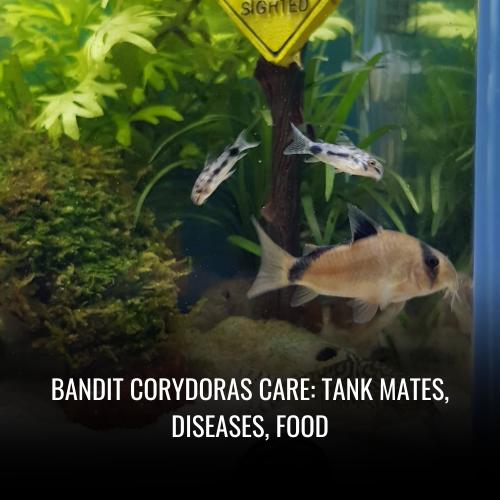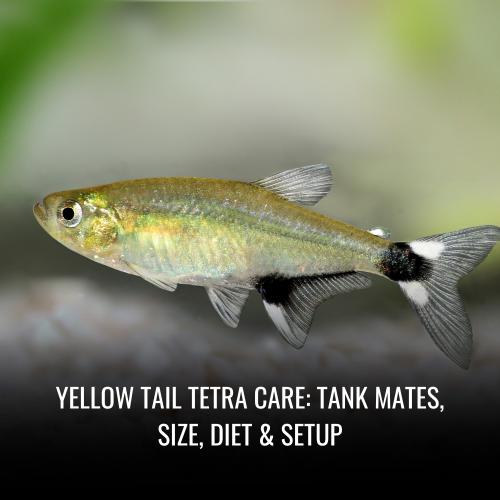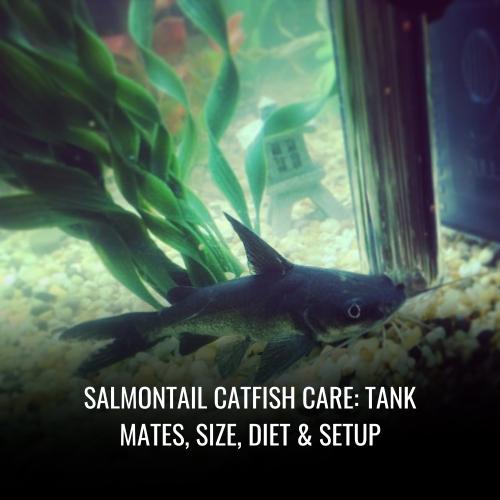Longfin Tetras might just be the perfect fit. These dazzling creatures are a popular choice among fish enthusiasts, known for their striking appearance and peaceful demeanor. Let’s dive into the world of Longfin Tetras and uncover everything you need to know to care for these beautiful fish.
For successful integration into community aquariums, understanding the Longfin Tetra’s requirements and natural behaviors is key. With proper care, these charming fish will provide a dynamic and beautiful display in the home aquarium.
| Scientific name | Brycinus longipinnis |
|---|---|
| Common names | Longfin Tetra, Longfin Blackskirt Tetra, Black Hifin Tetra |
| Family | Characidae |
| Usual size in fish tanks | 2-2.8 inches (5-7 cm) |
| Recommended pH range | 6.0 – 7.5 |
| Recommended water hardness (dGH) | 4 – 18°N |
| Recommended temperature | 72 – 82°F (22 – 28°C) |
| Reproduction | Egg scatterer |
| Origin | South America |
| Temperament to its own species | Peaceful |
| Temperament toward other fish species | Generally peaceful |
| Usual place in the tank | Middle |
| Lifespan | Up to 5 years |
| Tank size requirement | Minimum 20 gallons |
| Filtration system | Required |
| Sexual dimorphism | Subtle |
Scientific Name
Longfin Tetra, commonly known as the Longfin Blackskirt Tetra, holds the scientific title Hyphessobrycon callistus. This species graces the freshwater environments of the Amazon River basin in South America, making it a sought-after species for many aquarists. Their appealing elongated fins and peaceful nature have earned them fame in the aquarium trade. Not only do they exhibit a vibrant palette of colors, but their tendency to swim in schools amplifies their visual impact, adding to the serene ambiance of community tanks.
Here’s a snapshot of this species’ scientific profile:
| Longfin Tetra Details | |
|---|---|
| Scientific Name | Hyphessobrycon callistus |
| Common Names | Longfin Tetra, Longfin Blackskirt Tetra, Longfin Tetra Group |
| Native Region | Amazon River Basin, South America |
| Preferred Habitat | Freshwater Streams and Rivers |
| Notable Behavior | Schooling; Peaceful |
Longfin Tetras blend seamlessly into community aquariums because their gentle temperament aligns with other non-aggressive fish. When setting up a tank for these striking fish, it’s important to include their correct scientific and common names for accurate information and better community understanding.
Average Size
The Longfin Tetra, while small, is a dynamic presence in the aquarium. Generally, they reach an average size of about 2 inches (5 cm) in length. However, with optimal care and a well-maintained environment, some individuals may exhibit a slight growth spurt, reaching sizes up to 2.5 inches (6.5 cm). Their slender, elongated bodies contribute to their elegant swimming motion, enhancing their appeal in any aquarium setup.
| Longfin Tetra Size | |
|---|---|
| Average Length | 2 inches (5 cm) |
| Maximum Length | 2.5 inches (6.5 cm) |
| Body Shape | Slender and Elongated |
| Ideal Tank Size | Small to Medium-sized Community Aquariums |
Their size makes it easier to group them into schools, which is essential for a harmonious community tank filled with colorful schooling fish like the Longfin Tetra.
Lifespan
The expected lifespan of the Longfin Tetra, known scientifically as Brycinus longipinnis, ranges from 3 to 5 years. This estimated longevity is attainable under optimal aquatic conditions in a home aquarium. To ensure these fish thrive, aquarists must provide them with clean water, a varied diet, and a tranquil environment free from stressors.
Maintaining the water quality through regular changes and monitoring is paramount. Diet is also crucial; Longfin Tetras benefits from a mix of high-quality flake foods, frozen delicacies like brine shrimp, and the occasional live snack. By minimizing stress, which can come from aggressive tankmates or unsuitable living conditions, these fish are more likely to reach the higher end of their lifespan spectrum.
Investing in the proper care of Longfin Tetras can yield a significant return in terms of the years they grace your community aquarium. Regular health checks and creating a tank environment that mimics their natural habitat contribute greatly to their longevity. With conscientious care, these colorful and graceful schooling fish can provide aquarists with many years of enjoyment.
Natural Habitat
Longfin Tetras also recognized as the Black Tetra or Gymnocorymbus ternetzi, hail from the diverse ecosystems of South America. Although they have evolved subspecies within African waterways, such as the Gambia, Cameroon, and Nigeria, their origins trace back to the soft, acidic waters of South America’s slow-moving streams. Beneath the dense forest canopy, they exploit the dimly lit waters, swimming in the upper layers and feasting on a natural menu of worms, small crustaceans, and insects.
The habitats they occupy vary greatly—from large river systems to smaller streams and even lightly brackish estuarine environments—showcasing their remarkable adaptability. While they are not considered at risk according to the IUCN Red List, the Longfin Tetra’s versatility makes it a resilient and popular choice for aquarists. Breeding farms specifically develop this species to enhance its dramatic finnage and color, ensuring a steady supply for community aquariums worldwide.
Appearance
Longfin Tetras are adorned with remarkably elongated fins that set them apart from their standard counterparts, enhancing their swimming with a gentle, flowing grace. The fins are noticeably extended, with the dorsal and anal fins being particularly striking features. They glimmer with a natural luster, boasting silver bodies interspersed with iridescent scales that reflect light, creating a captivating dance of shimmer.
As they exhibit a degree of color variation, aquarists might notice some Longfin Tetras displaying accents of red, blue, or even black, which adorns their body and fin edges. The presence of these vivid colors, combined with their long, flowing fins, contributes to a mesmerizing visual impact in any aquatic setting. Indeed, the Longfin Tetra’s elegant appearance is a statement of living art that attracts both the novice and experienced aquarium enthusiasts alike.
| Characteristic | Details |
|---|---|
| Fin Elongation | Very pronounced |
| Body Color | Shimmering Silver |
| Scale Highlight | Iridescent |
| Color Variations | Red, Blue, Black |
| Aesthetic Contribution | Graceful and Elegant |

Behavior & Temperament
The Longfin Tetra’s tranquil disposition stands out in the community aquarium. Unlike some of their tetra cousins, they display very little tendency to nip fins. This peaceful behavior makes them ideal tank mates for a plethora of fish species, especially those with delicate or flowing fins. Aquarists can rest assured that when kept in appropriate shoals, Longfin Tetras are more interested in interaction within their species than bothering their tankmates with unwanted nipping.
| Behavior Characteristic | Details |
|---|---|
| Fin Nipping | Low tendency, ideal for community tanks |
| Aggression | Minimal, peaceful with tankmates |
| Friendliness | Highly social, interacts well with others |
| Schooling | Integral to their behavior; groups of 6+ recommended |
| Solitary Lifestyle | Not advisable, can lead to stress and health issues |
| Need for Groups | Essential for well-being, larger groups preferred |
Are Longfin Tetra Aggressive To Each Other & Other Fish?
Exhibiting a peaceful and sociable nature, Longfin Tetras are generally not aggressive either toward their own species or other fish in the tank. It’s important, however, to maintain them in suitable conditions, which include keeping them in groups of 8 or more. This helps ensure that any minor territorial disputes that may arise are diffused among the group, minimizing stress and aggression overall. Appropriate companions such as smaller Characins, Catfish, and certain Cichlids can coexist with Longfin Tetras harmoniously in a well-structured community aquarium.
Are Longfin Tetra Friendly To Each Other & Other Fish?
As social fish, Longfin Tetras exhibit a communal spirit that translates to amicable behavior within the group and towards other aquarium residents. They flourish within a dynamic of their own kind, and their gregariousness extends to interactions with other peaceful community fish. Longfin Tetras can peacefully share their space with species that match their size and temperament, contributing to a serene aquatic environment.
Are Longfin Tetra Schooling Fish?
Longfin Tetras epitomize the essence of schooling fish. Naturally inclined to group together, they are most comfortable and vibrant when maintained in a shoal. Observing a group of Longfin Tetras maneuvering in unison provides not only a visual treat but also a testament to their need for social structure. To experience their schooling behavior fully, it’s recommended to keep them in groups of at least six, though larger groups will help these colorful fish truly thrive and reduce any skittishness.
Can You Have Just One Longfin Tetra In The Tank?
Keeping just one Longfin Tetra is a setup for a dispirited existence for this fish. With their social nature, solitary life can lead to stress, which manifests as dull colors, a lack of energy, and potential health problems. For the emotional and physical well-being of Longfin Tetras, it’s crucial to provide companionship in the form of a group where they can interact and establish their social hierarchy.
Do Longfin Tetra Need To Be In Groups?
Longfin Tetras are hard-wired for communal living, requiring the company of their own kind to live a full and healthy life. A group of six is the absolute minimum to meet their social needs, but larger groups of eight or more are preferred. It’s not just about numbers; grouping these fish provides them with a sense of security and contentment. Additionally, their well-being is visually apparent as they move synchronously and display their luminous colors with confidence within the tank.
In a Longfin Tetra community, their social interactions are a delight to observe. They move with unity, each individual a part of a larger, dynamic shoal, resulting in a tranquil and balanced aquarium life.
Food & Diet
Longfin Tetras are adaptable and versatile omnivores in the aquarium setting. Their diet in captivity can mimic the diversity of their natural feeding habits in the wild, encompassing a variety of foods from flake food to live treats. A balanced diet for these colorful fish should include high-quality flake foods daily, complemented by occasional servings of live or frozen foods such as brine shrimp or bloodworms, which meet their significant protein requirements. It is recommended to feed Longfin Tetras small portions multiple times a day, ensuring each portion is consumed within three minutes to prevent overfeeding and maintain water quality.
Feeding Longfin Tetras different types of food not only provides them with necessary nutrients but also enriches their environment and stimulates their natural foraging behaviors. Live foods such as small fish, shrimp, worms, and mosquito larvae can offer this enrichment, while vegetable-based components in quality flake foods and certain algae ensure a well-rounded diet. Below, we explore different components of the Longfin Tetra diet.

Does the Longfin Tetra Eat Algae?
While Longfin Tetras may occasionally peck at algae in the tank, they do not rely on it as a significant food source. Algae may contribute to their varied nutritional intake, but these tetras should be offered a diet primarily comprising quality flake foods and live or frozen foods to ensure they receive all their essential nutrients. Although Longfin Tetras might help with minor algae control, they are not a solution for algae issues in an aquarium, which should be addressed with proper tank maintenance.
Does Longfin Tetra Eat Shrimp?
Longfin Tetras will readily consume small live or frozen shrimp, which are an excellent addition to their diet. Due to the small size of their mouths, they are more suited to eating tiny shrimp species. Shrimp provide essential nutrients and offer a form of enrichment, simulating the natural feeding habits of Longfin Tetras. Occasional treats of shrimp can help maintain the overall health and vibrancy of these fish.
Does Longfin Tetra Eat Bloodworms?
Bloodworms are an ideal food choice for Longfin Tetras, providing them with a source of high-quality protein. In the wild, bloodworms would naturally be part of their diet, so feeding them in the captive environment is eminently suitable. Live, frozen, or freeze-dried bloodworms can be offered occasionally, stimulating the natural foraging behaviors of Longfin Tetras and aiding in their wellbeing.
Does Longfin Tetra Eat Mosquito Larvae?
As opportunistic feeders, Longfin Tetras appreciate the inclusion of mosquito larvae in their diet. These larvae offer valuable protein and can be fed to the fish in live or frozen form. Including mosquito larvae as a treat can promote healthy immune systems and contribute to the Longfin Tetras’ vibrant coloration, making it a beneficial part of their dietary regimen.
Does Longfin Tetra Eat Planaria?
If planaria—tiny non-segmented flatworms—appear in the aquarium, Longfin Tetras may eat them as part of their opportunistic nature. However, it’s essential to focus on providing a balanced diet that includes quality flake foods and appropriate live or frozen foods, rather than relying on planaria or any other single food source for their nutrition. Keeping the aquarium environment clean is crucial for the prevention of pests like planaria and to ensure the long-term health of the Longfin Tetras.
Does Longfin Tetra Eat Plants?
Longfin Tetras might occasionally nibble on soft-leaved plants within the aquarium, but they are not considered considerable plant eaters. A diet that comprises a mix of quality flake foods, small live foods, and occasional vegetable matter will satisfy their nutritional needs without leading them to overindulge in the aquarium’s plant life. Thus, while Longfin Tetras may show interest in plant matter, it should not be their primary food source, and they are not a threat to a well-planted tank.

Sexing: Male vs Female
Male vs Female Identifying the sex of Longfin Tetras can be intriguing for breeder enthusiasts and casual hobbyists alike. As these fish mature, the distinction between males and females becomes evident. Here are the key differences:
- Body Shape: Mature female Longfin Tetras often have fuller bodies, giving them a plump appearance, especially when ready to breed. In contrast, males typically maintain a slimmer profile.
- Fin Development: A male Longfin Tetra boasts extended dorsal and anal fins which are not only longer but also have a narrow, pointed shape. These long, flowing fins can be quite striking as the fish swims through the water.
- Fin Comparison:
- Males: Narrow, pointed dorsal fin
- Females: Shorter, less pronounced dorsal fin
Observing these traits requires a keen eye, especially when the tetras are young. The differentiation is more pronounced in maturity, as the males’ and females’ physical characteristics are fully developed. For those with a breeding tank, recognizing these differences is essential for successful breeding endeavors and maintaining the dynamics of a community aquarium.
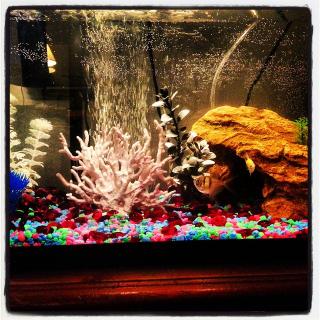
Longfin tetra Tank Mates
Longfin tetras are an excellent choice for adding vibrancy to a peaceful and active community aquarium. They harmonize well with other congenial species like the African Red-eyed Tetras and West African Characins. Additionally, they complement the energy of active Congo Tetras.
When housed with South American Cichlids such as Pelvicachromis or Hemichromis, and even with the graceful Synodontis Catfish, these tetras function effectively as schooling fish, enhancing the tank’s dynamic.
It’s important to keep Longfin tetras in groups of at least six to foster a sense of security and allow for the display of their instinctual behaviors. This also minimizes the stress associated with isolation.
Creating a comfortable habitat for Longfin tetras involves setting up a roomy aquarium with a dark substrate and background. Dense plants and floating foliage are crucial to provide shelter and reduce stress under intense lighting conditions.
Lastly, Longfin tetras require clean water with low levels of nitrogenous waste. A robust filtration system and regular partial water changes are vital to preserving a healthy environment for your Longfin tetras and their companions.
Tank Mates for Longfin Tetras
- African Red-eyed Tetras
- Congo Tetras
- West African Characins
- South American Cichlids (e.g., Pelvicachromis, Hemichromis)
- Synodontis Catfish
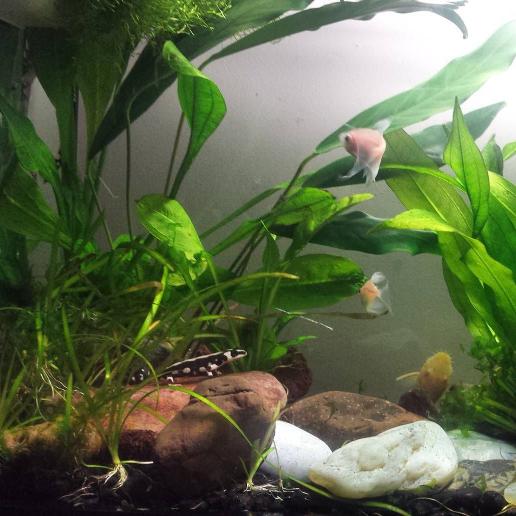
Aquarium Setup
Setting up the right environment is critical for the health and happiness of Longfin Tetras. These active swimmers demand space and conditions that parallel their natural South American habitats. A well-planned aquarium should consider space, water composition, filtration, and lighting to craft a suitable home for these elegant fish.
Ideal Tank Size
To accommodate the lively nature of Longfin Tetras, a minimum of a 15-gallon tank is recommended for a small school; however, they truly flourish in a larger 20 to 40-gallon aquarium. Ensuring an appropriate length of at least 24 inches, this tank size allows for proper swimming space, fostering natural schooling behavior. A spacious environment not only minimizes aggression but also enables more intricate aquascaping, providing aesthetics and comfort for these captivating fish.
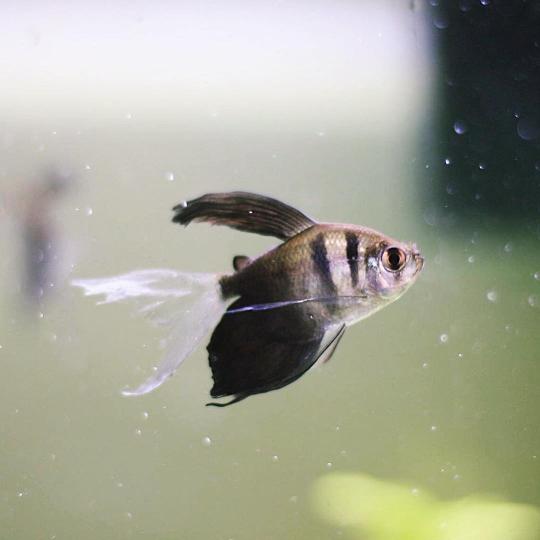
Ideal Water Parameters
Mimicking the Longfin Tetra’s home waters involves maintaining a pH range of 6.0 to 7.5 and a general hardness (GH) within 5 to 20. Keeping the water slightly acidic to neutral with a comfortable temperature between 72 to 79°F (22 to 26°C) will support the physiological needs of your tetras. These conditions contribute significantly to their well-being and are reflective of their native riverine ecosystems. Consistent water parameters are essential, as Longfin Tetras have a low tolerance for fluctuation, which can lead to stress and health issues.
Filtration
A high-quality filtration system is the backbone of a Longfin Tetra’s aquarium. This setup should be capable of both mechanical and biological filtration, maintaining low levels of ammonia and nitrites which are toxic to these sensitive fish. Yet, it’s important to avoid strong currents—Longfin Tetras prefer a gentle flow that imitates their calm natural streams. Filters such as sponge or canister models with adjustable flow are perfect for creating this balance. Keeping the filtration system well-maintained through regular cleaning is key to sustaining a pristine environment for your Longfin Tetras.
Lighting
Longfin Tetras thrive under dim lighting that reflects the shaded, tannin-rich waters of their South American habitat. Utilizing floating plants can attenuate strong lights, providing a comforting shelter. A timer-controlled lighting system that simulates natural dawn and dusk schedules will prevent stress and promote a regular life cycle. LEDs are the preferred choice for many aquarists; they are energy-efficient, produce minimal heat, and can be adjusted to ensure your tetras show off their iridescent colors without feeling overwhelmed. A well-managed lighting setup will accentuate the beauty of Longfin Tetras and support the growth of aquatic plants.
Common Possible Diseases & Prevention
Disease Resilience and Prevention Longfin Tetras are generally robust fish, exhibiting resilience to diseases in optimal tank conditions. Nevertheless, like all aquarium inhabitants, they are not immune to health issues, but diligent care can mitigate most problems. A crucial aspect of disease prevention is simulating their native environment and attending to their dietary needs. Consistency in tank maintenance alongside a balanced diet fortified with necessary nutrients safeguards their strong immune system.
Ick – A Common Adversary One common ailment that Longfin Tetras faces is “ick” or ichthyophthiriasis, especially if the water temperature dips below their comfort zone. Recognizing and promptly managing any signs of this parasitic infestation is key to preventing its spread.
Mitigating Stress Factors Stress undeniably contributes to health declines and heightened disease risk in Longfin Tetras. Ensuring a serene habitat, with conditions close to their natural setting, helps minimize stress. Sudden changes in the environment, poor water quality, and improper diet are stressors that aquarists must diligently avoid.
Quick Reference Table for Disease Prevention
| Factor | Prevention Strategy |
|---|---|
| Environment | Maintain pH 6.0-7.5, temp 72-79°F, soft to moderate GH |
| Nutrition | Offer a mix of quality flake foods and frozen options |
| Stress Reduction | Provide ample space and hiding spots, avoid overstocking |
| Disease Management | Regular monitoring, quarantine new fish, treat promptly |
Attentive care and an environment close to their ancestral home are your best defenses against disease in Longfin Tetras.
Breeding Longfin Tetra in AquariumTetra
Breeding Longfin Tetras can be quite rewarding when their natural spawning conditions are appropriately recreated within the aquarium. To mimic their native environment, dim lighting, and fine-leaved plants should be provided for females to deposit their adhesive eggs. The breeding tank itself demands acute attention to detail, where slightly acidic water (pH about 6.5) and soft water with minimal hardness contribute to breeding success.
The Longfin Tetras are egg scatterers; once spawning occurs, it’s critical to remove the adults to protect the delicate eggs from potential predation. This cannibalistic tendency is common among Longfin Tetras, making adult removal a necessary step post-spawning.
For the newly hatched fry, initial feeding should consist of infusoria or commercial liquid fry food. As they grow, they transition to baby brine shrimp and finely crushed flake foods.
Feeding Guideline for Longfin Tetra Fry
| Fry Age | Food Type |
|---|---|
| Newly Hatched | Infusoria, Commercial liquid fry food |
| Growing Fry | Baby brine shrimp, Finely crushed flake food |
Providing this sequence of nutrition ensures healthy development during the critical early stages of life.
Are Longfin Tetra Easy To Keep?
Longfin tetras are renowned for their adaptability and peaceful nature, which make them an excellent choice for both novice and experienced aquarists. With a broad pH tolerance ranging from 6 to 8 and a water hardness of 5-19°N, they can thrive in varying aquatic conditions. Their hardiness is reflected in their ability to withstand some fluctuations in water parameters, although stable water quality remains key to their health.
These schooling fish are dynamic additions to community aquariums; they get along well with other non-aggressive species, making them perfect inhabitants for mixed-species tanks. As omnivorous creatures, Longfin tetras are not finicky eaters. They happily accept a variety of foods, including high-quality flake foods, frozen fare like bloodworms, as well as live snacks such as brine shrimp. Their ease of feeding contributes to their reputation as undemanding pets.
Are Longfin Tetra Sensitive To Water Changes?
Longfin tetras display a notable sensitivity to rapid changes in water conditions. In particular, abrupt shifts in ammonia, nitrites, and nitrates can trigger stress responses in these fish, leaving them vulnerable to weakened immune defenses and disease. Maintaining stability in the aquarium’s water parameters, including temperature and pH levels, is imperative for their well-being.
When conducting water changes, aquarists should take extra care to ensure that the new water closely matches the existing conditions in temperature and chemistry. Gradual acclimatization is recommended when introducing Longfin tetras to new water, enabling them to adjust without experiencing shock or behavioral changes. Steady water conditions foster the long-term health and vitality of these active tetras, underscoring the importance of regular water testing and gentle adjustments.
Are Longfin Tetra Sensitive To Ammonia?
Indeed, Longfin tetras have a low tolerance for ammonia. This substance is hazardous to fish, even at minimal concentrations. Ammonia’s toxic effects can induce stress and lead to serious health issues, and without corrective action, may prove fatal for Longfin tetras. Symptoms of ammonia toxicity include rapid gill movement, labored breathing, lethargy, loss of appetite, and clamped fins—all signs that demand immediate attention.
Maintaining optimal water quality with frequent water changes and effective filtration is essential to control ammonia levels. Preventing any ammonia increase is significantly beneficial for the respiratory health of Longfin tetras and helps protect them from opportunistic infections. Regular ammonia testing in the tank is a must, ensuring a habitable and secure environment for these sensitive fish.
Are Longfin Tetra Sensitive To Copper?
Like many fish species, Longfin tetras are particularly sensitive to copper. Even trace amounts can be harmful, leading to stress and energy depletion. In severe cases, copper exposure can be deadly. Sources of copper include tap water, metallic tank decorations, and certain medications introduced into the aquarium. Therefore, it is vital to be vigilant about potentially copper-containing additions to their environment.
Copper toxicity can impair the gills of Longfin tetras, obstructing their breathing and overall health. To avoid such risks, aquarium enthusiasts should confirm that all items are free from copper before they reach the tank. Tracking water parameters continuously, with a special focus on copper levels, is crucial. A copper-safe habitat is a cornerstone of Longfin tetra welfare, allowing them to thrive and exhibit their fascinating behaviors.

